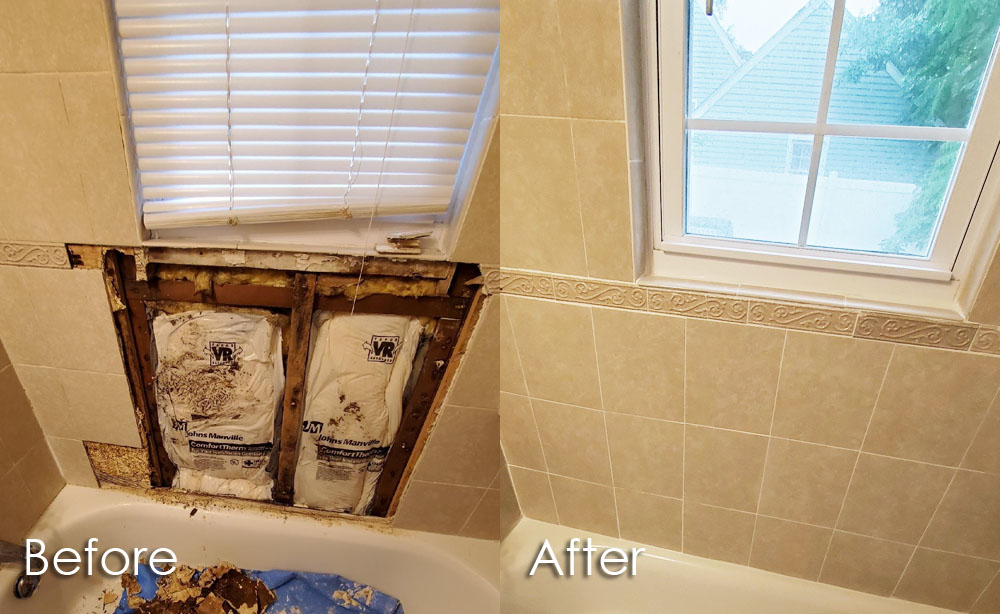Ways to Fix a Water-Damaged Wall in the Bathroom
Course DetailThey are making a number of great annotation related to How to Fix a Water Damage Bathroom overall in the content below.

The washroom is extremely at risk for wet buildup as well as prospective water damages because of the regular use of water in it. This short article offers simple inspection techniques to aid identifying water damages hazards.
The frequent use of water in the bathroom makes it extremely vulnerable for moist accumulation and also possible water damages. By evaluating it consistently, you can lower water associated damages.
The following set of examinations is simple to carry out and need to be done as soon as in every three months in order to keep your washroom healthy as well as to prevent possible water problems brought on by the bath tub, the shower, pipeline joints as well as plumbing, sinks, cabinets, and the commode
Do not forget doing these assessments as well as be comprehensive while performing them. Remember that these basic assessments can save you a great deal of cash by supplying early indications for water damages
Sinks as well as Cabinets
Sinks and closets are revealed to wetness and moisture daily and also are typically forgotten. Check routinely under the sink as well as on the countertop over it. Repair any kind of drip in the trap as it might suggest drainpipe problems. Check out the sink, sluggish draining pipes may show a blocked drainpipe. Replace sink seals if they are cracked or loosened.
Bathtub and also Shower
The shower as well as bathtub need unique interest and also maintenance. Examine the tiles and also replace if split. Make sure that there is no missing cement between the floor tiles. Evaluate as well as change cracked caulking at joints where the walls satisfy the flooring or the tub. Clogged drains and also pipes troubles will protect against the tub from drying out and might indicate severe problems underneath the bathtub. Talk to a professional right away to stop structural damages. Focus on discolorations or soft areas around the bath tub walls as they may suggest an inner leak.
Plumbing
Signs for water damage are difficult to identify since many pipes are mounted inside the wall surfaces.
Pay special attention to floor covering and also wall surfaces moisture and also stains as they may show an invisible plumbing issue. Examine moisture levels in adjacent areas as well.
The Bathroom
The bathroom is an at risk water joint. Check the water lines as well as look for leakages around the toilet seat, in the hose pipe, and also under the water storage tank. If you find any kind of signs of wetness on the flooring around the commode, look for leaks in the toilet rim as well as tank seals.
Be aware that hanging toilet dish antiperspirants increases the chances for blockages.
Water Damage Signs In The Bathroom To Avoid Cleanup
Musty smell
This is one of the easiest signs to catch because musty smells are so odorous. The damp, earthy, moldy smell should be a big red flag. The smell will develop when moisture gets trapped in surfaces, and begins to facilitate mold growth. Leaking pipes under cabinets, inside walls, and behind shower fixtures will cause moisture to stay trapped and not dry, which will lead to mold growth and spread. As soon as you notice any musty smells in your bathroom, have it checked for hidden water damage and cleanup signs.
Visible mold
If the smell isn’t there to give it away, sometimes you will actually see mold growth. Finding mold in your bathroom is a serious problem, because mold is very harmful to your health. By the time mold growth is visible, it also means that water damage has already occurred and been present for some time. The only way the mold problem can be resolved is to find the source of the moisture and get it stopped. To safely and adequately remove mold, you need to have professionals handle the remediation. Do not waste any time in getting mold problems addressed, fixed, and sanitized so that you can protect you and your family from the many respiratory symptoms caused by mold exposure.
Damaged floors
Bathroom floors should be able to withstand some exposure to water while still remaining in good condition. However, when excess exposure or water leaks occur, they will begin to damage even the most water-resistant flooring. If you notice any cracking, bubbling, staining, or warping on your bathroom floors, there is probably a water leak somewhere causing the distortion. If you notice areas of the floor have become softer, or even have a spongy feeling, there is probably damage to the subfloor. Subflooring is typically made up of plywood. When plywood is exposed to water or moisture, it will absorb it. Once it has become saturated, the weight of the excess water will cause the wood to swell and soften. Check the floors in your bathroom frequently to catch any of these sings before they lead to damaged subflooring.
Changes on walls
When water leaks behind walls, it will cause changes in the drywall. Peeling plaster, blistering paint, and soggy wallpaper are all good indicators that excess water is building up behind the wall. Water leaking behind drywall will cause it to swell and be soft to the tough. If you start to notice gaps along the trim of your walls, or where tile meets the wall, it could also be a strong indicator that there is a leak behind the wall. Any changes, distortion, or damage on the walls should be evaluated as soon as you notice it to prevent further water damage and cleanup.

As a person who reads about How to Fix a Water Damage Bathroom, I figured sharing that excerpt was valuable. Sharing is caring. Helping others is fun. Thanks a bunch for your time. Kindly pay a visit to our website back soon.
Get Your Estimate Now